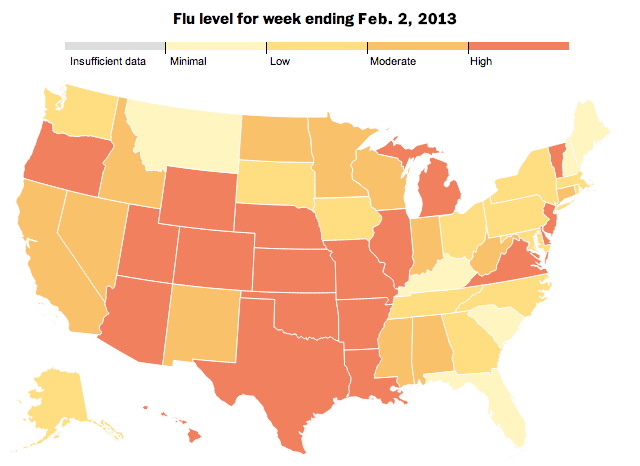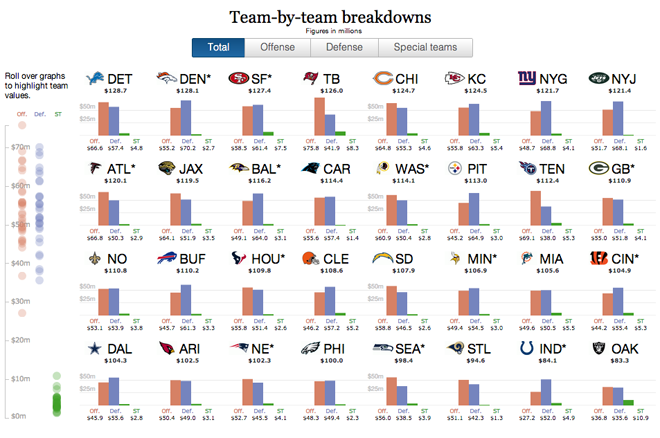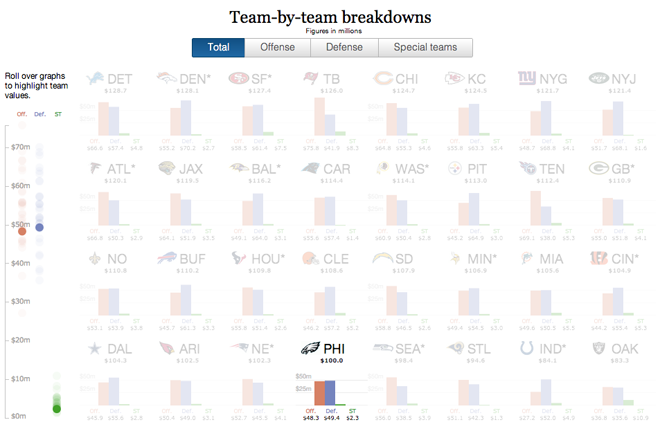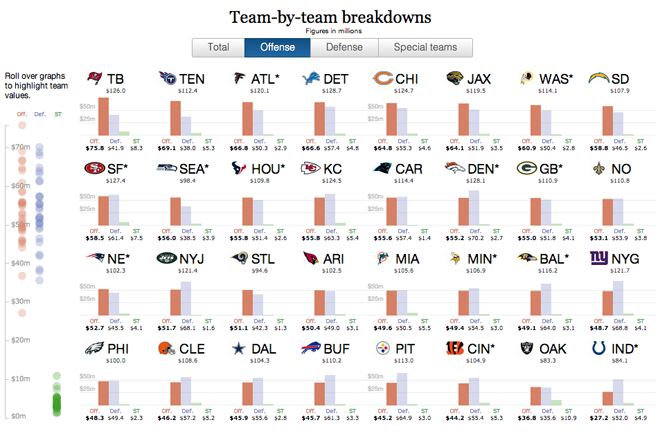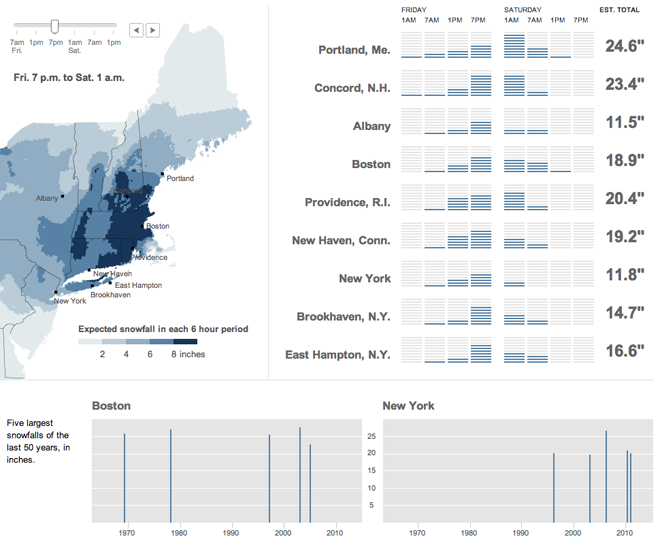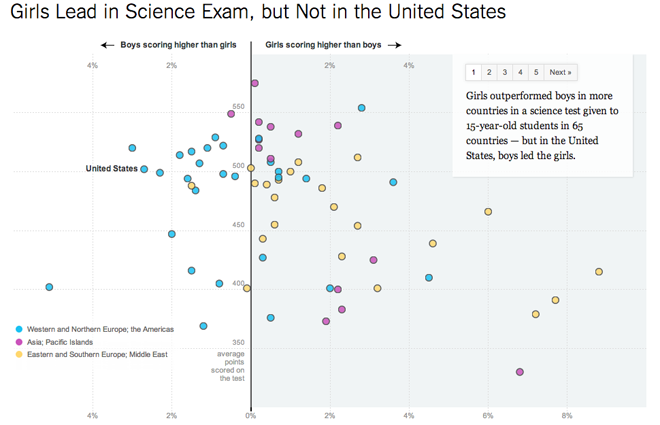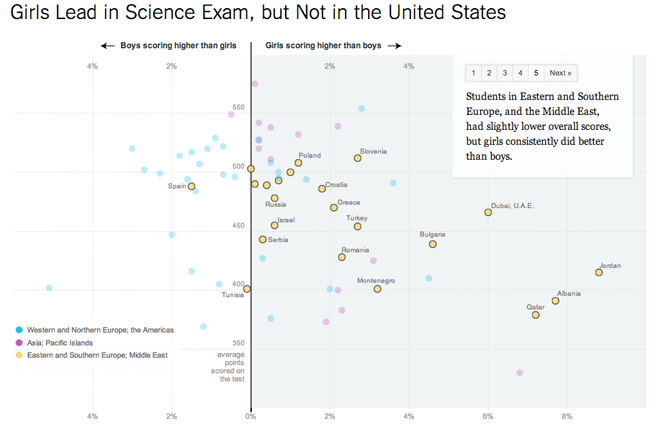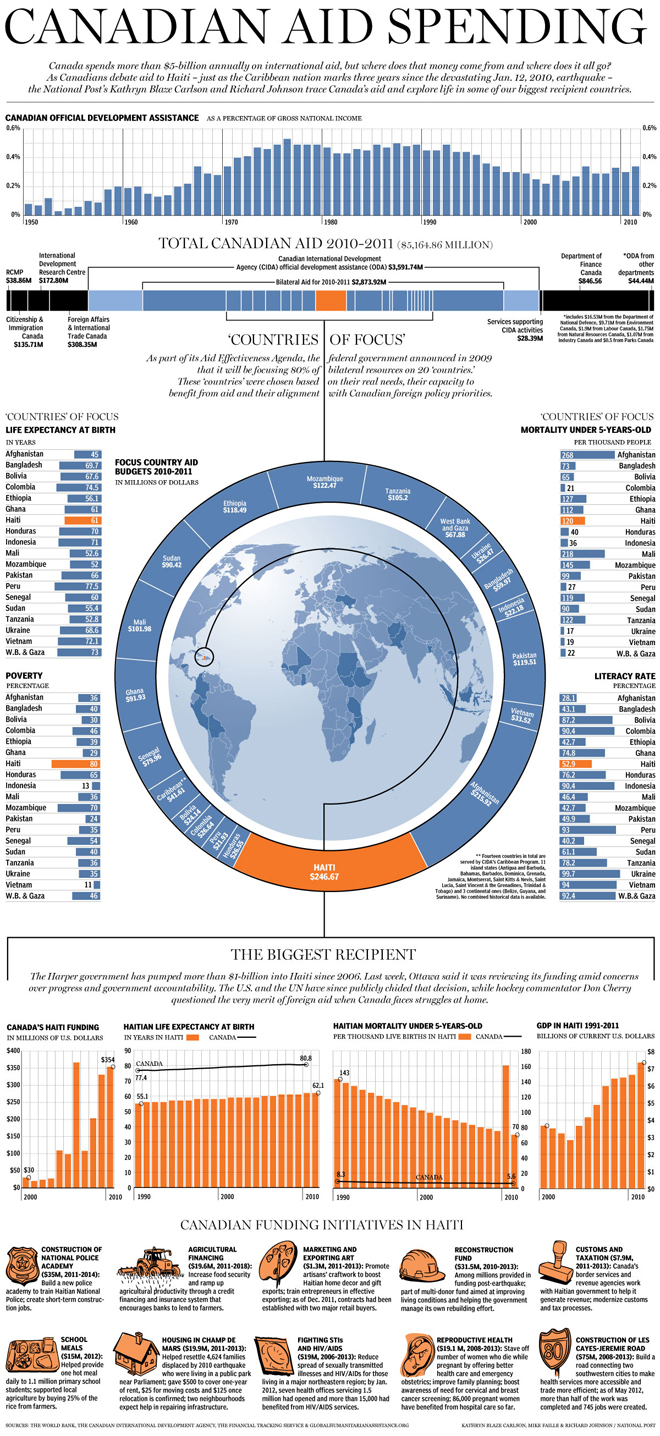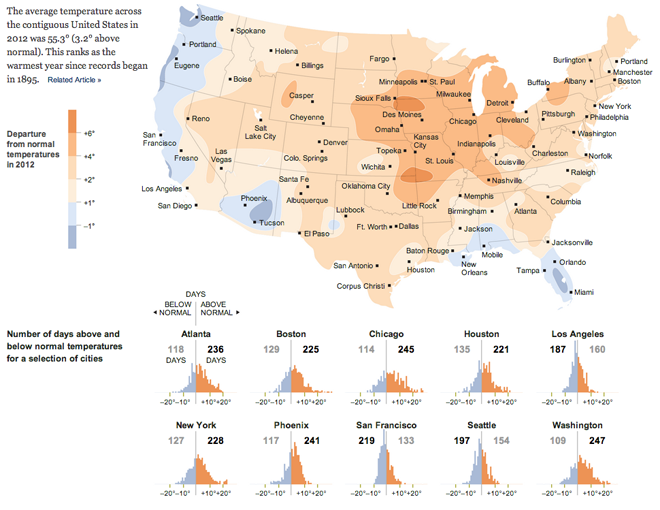I watched the first season of the Walking Dead, but I have not followed the show closely since. That is not to say it is a bad show or is not entertaining, I just haven’t had the time. Fortunately Richard Johnson and Andrew Barr of the National Post have been following along. Otherwise, they would have not been able to create the infographic from which this cropping comes.

The piece examines which character killed which zombie and with what weapon. They then pivot the data to examine the total kills by type and by character. What is interesting, however, is that when the image is reduced and rotated, you get a quick overview of the amount of carnage.

Credit for the piece goes to Richard Johnson and Andrew Barr.

